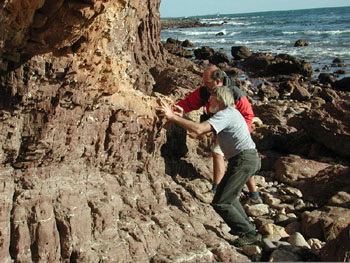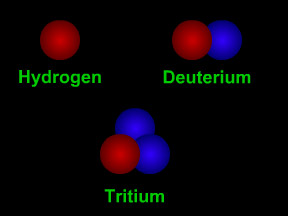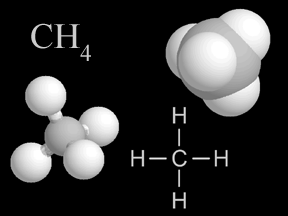Click on image for full size
Courtesy of Martin Kennedy, UCR
Scientists Search for the Cause of Ancient Global Warming
News story originally written on May 28, 2008
Earth’s climate is warming quickly now. We know that this has to do with additional greenhouse gases in the atmosphere and other global changes. But there is a lot we don’t yet know about how warming will affect our planet. How could we know? We’ve never been through this before, have we?
Actually, even through we humans have never experienced fast global warming, our planet has. And our planet keeps records of what happened. The oldest records that the Earth keeps are in its rocks.
Looking through those records of our planet, geologist Martin Kennedy searched for evidence of ancient climate changes in very old sedimentary rocks. He was interested in learning more how and why rapid global warming happened 635 million years ago.
Kennedy and two other scientists, David Mrofka and Chris von der Borch, collected hundreds of sediment samples from rocks in South Australia. Each sample of sediment was studied with stable isotope analysis, an important tool used to understand climates of the past.
"Our findings document an abrupt and catastrophic global warming that led from a very cold, seemingly stable climate state to a very warm, also stable, climate state--with no pause in between," said Kennedy.
Earth had been covered by a thick ice sheet for millions of years before the warming started 635 million years ago. Their research suggests that a little warming caused the ice sheets to collapse. This released a large amount of the greenhouse gas methane into the atmosphere, which had been in a frozen icy form under the ice sheets. The methane increased global warming rapidly.
Today, methane is in Arctic permafrost and beneath the oceans. Researchers believe that these sinks of methane will remain where they are unless triggered by global warming. It's possible that very little warming could unleash this trapped methane, which could warm the Earth tens of degrees.















